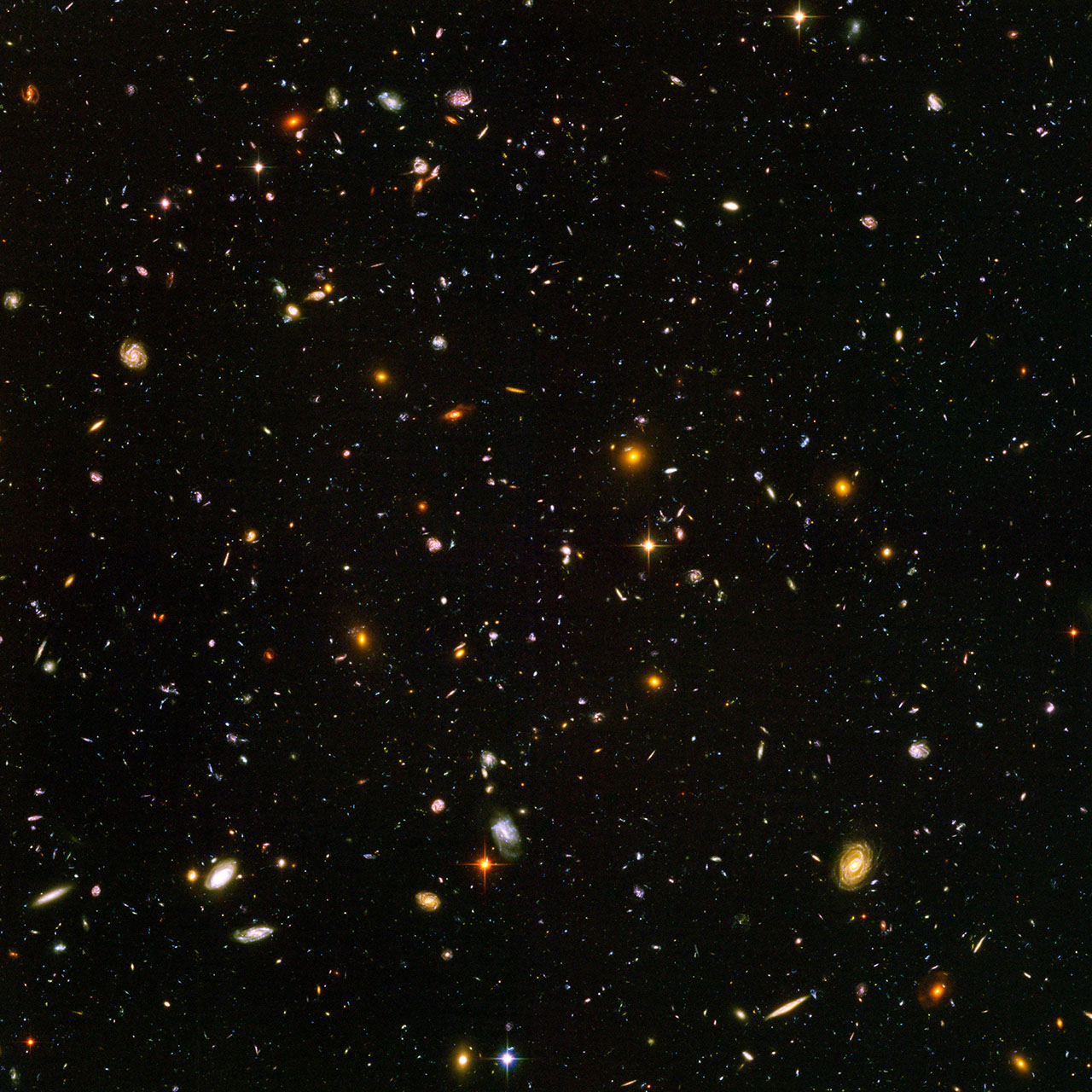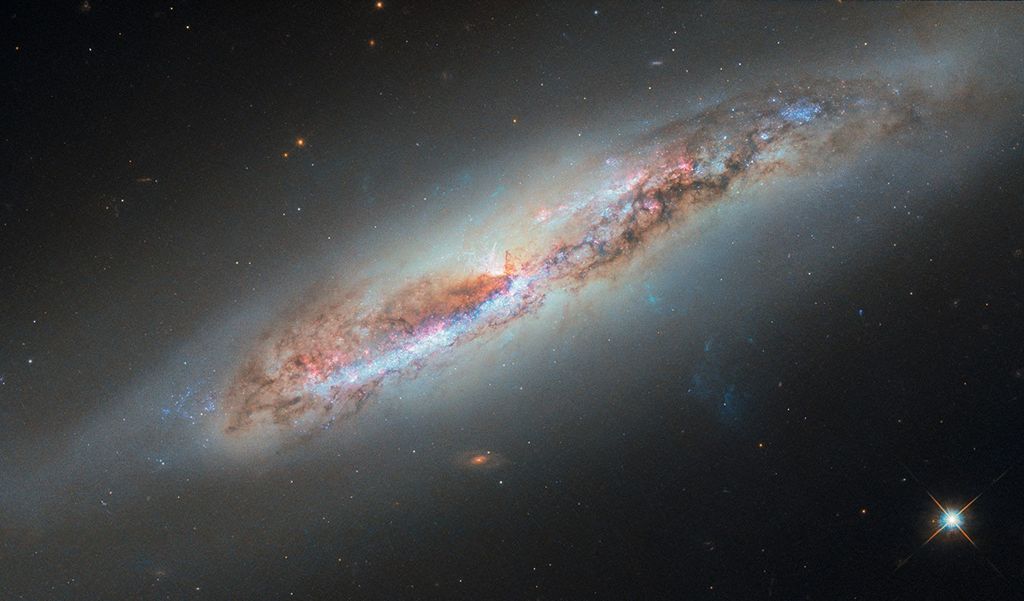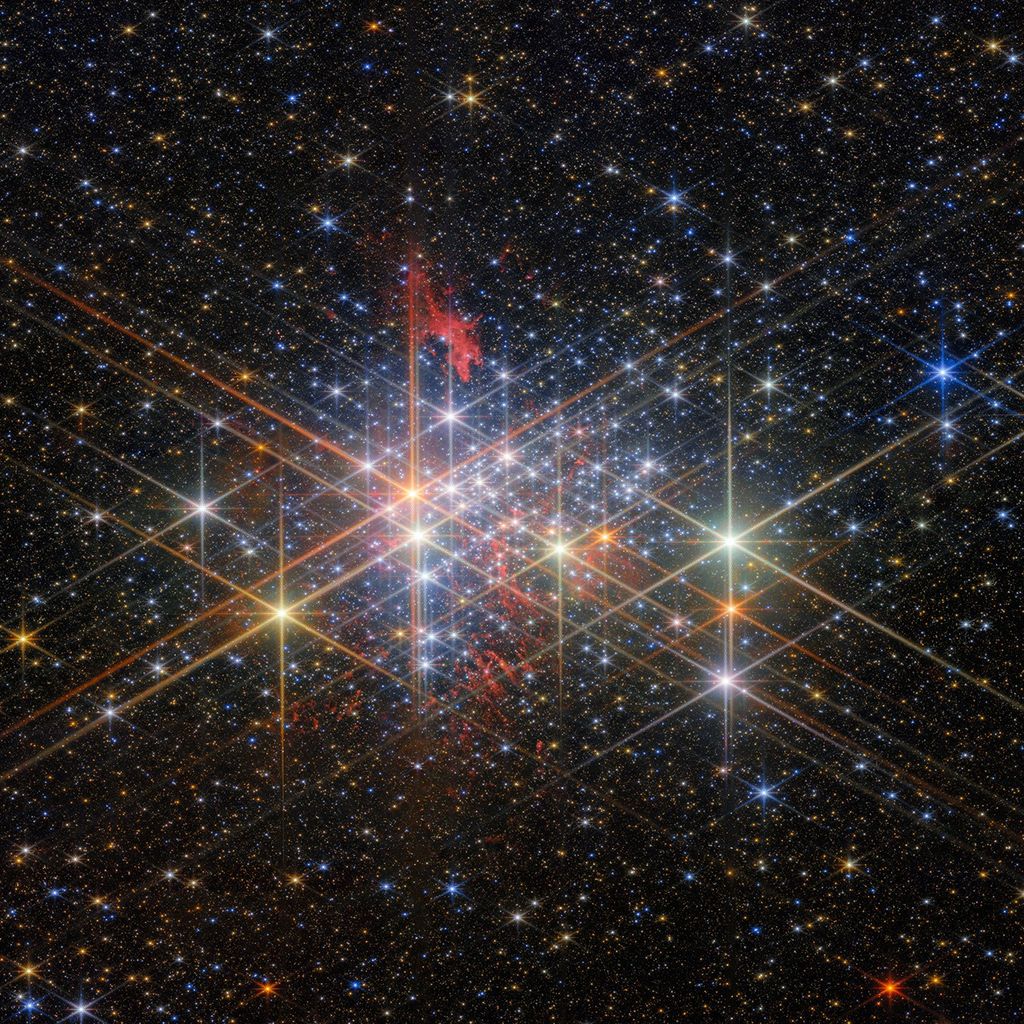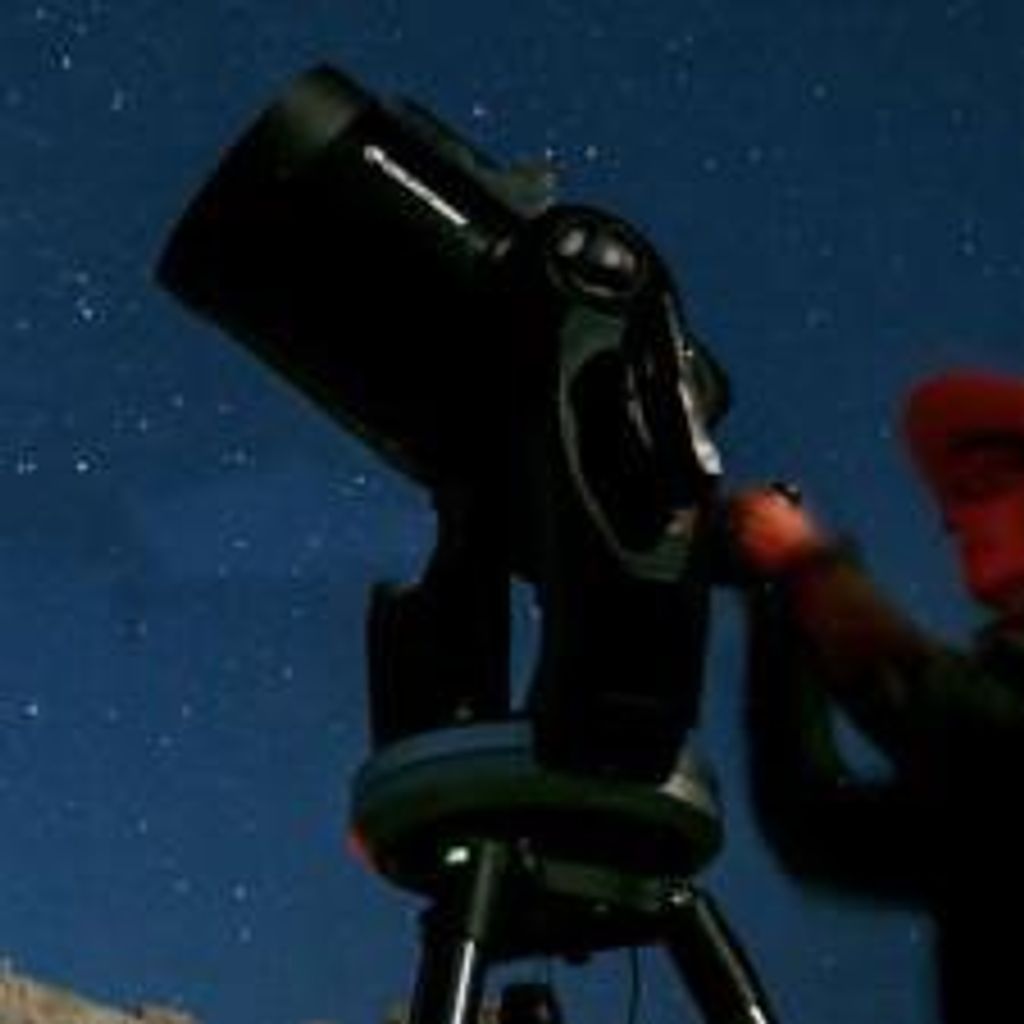1 min read
Hubble Ultra Deep Field

This Hubble Space Telescope image, known as the Hubble Ultra Deep Field, reveals about 10,000 galaxies and combines ultraviolet, visible, and near-infrared light. Two programs that will use the James Webb Space Telescope will add more detail to this image, capturing thousands of additional galaxies in a fuller range of infrared light. Webb will return both imagery and data known as spectra, providing more details about some of the earliest galaxies to exist in the universe for the first time.
This image was captured before the launch of the James Webb Space Telescope. No Webb data are shown in this image.
About the Object
- R.A. PositionR.A. PositionRight ascension – analogous to longitude – is one component of an object's position.03h 32m 39.99s
- Dec. PositionDec. PositionDeclination – analogous to latitude – is one component of an object's position.-27° 48' 0.0"
- ConstellationConstellationOne of 88 recognized regions of the celestial sphere in which the object appears.Fornax
- DistanceDistanceThe physical distance from Earth to the astronomical object. Distances within our solar system are usually measured in Astronomical Units (AU). Distances between stars are usually measured in light-years. Interstellar distances can also be measured in parsecs.The image is 3 arc minutes square
About the Data
- Data DescriptionData DescriptionProposal: A description of the observations, their scientific justification, and the links to the data available in the science archive.
Science Team: The astronomers who planned the observations and analyzed the data. "PI" refers to the Principal Investigator.This image was created from HST data from the following proposal: 9978: S. Beckwith, S. Malhotra, M. Giavalisco, N. Panagia, J. Rhoads, M. Stiavelli, R. Somerville, S. Casertano, B. Margon, C. Blades, J. Caldwell, and M. Clampin (STScI), M. Corbin (CSC), M. Dickinson, H. Ferguson, and A. Fruchter (STScI), R. Hook (STScI/ECF), S. Jogee, A. Koekemoer, R. Lucas, M. Sosey and L. Bergeron (STScI).
- InstrumentInstrumentThe science instrument used to produce the data.HST>ACS/WFC
- Exposure DatesExposure DatesThe date(s) that the telescope made its observations and the total exposure time.September 24, 2003 - January 16, 2004, Exposure Time: 11.3 days
- FiltersFiltersThe camera filters that were used in the science observations.F435W (B), F606W (V), F775W (i), F850LP (z)
- Object NameObject NameA name or catalog number that astronomers use to identify an astronomical object.Hubble Ultra Deep Field, HUDF
- Object DescriptionObject DescriptionThe type of astronomical object.Optical Survey
- Release DateJune 22, 2022
- Science ReleaseNASA’s Webb to Uncover Riches of the Early Universe
- CreditNASA, ESA, HUDF Team, Steven Beckwith (STScI)

Blue: F435W (B) Green: F606W (V) + F775W (i) Red: F850LP (z)
Related Images & Videos

Outlines of Webb’s Ultra Deep Field Observations
This image shows where the James Webb Space Telescope will observe the sky within the Hubble Ultra Deep Field, which consists of two fields. The Next Generation Deep Extragalactic Exploratory Public (NGDEEP) Survey, led by Steven L. Finkelstein, will point Webb’s Near-Infrared...

Webb: Revealing the First Galaxies
Take a trip through time and space to the early universe with NASA’s James Webb Space Telescope. How will Webb reveal the never-before-seen first galaxies? What are astronomers looking for? Discover the answers to these questions and more with this video. Production Details All...
Share
Details
Laura Betz
NASA’s Goddard Space Flight Center
Greenbelt, Maryland
laura.e.betz@nasa.gov
NASA, ESA, HUDF Team, Steven Beckwith (STScI)






























